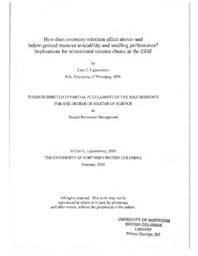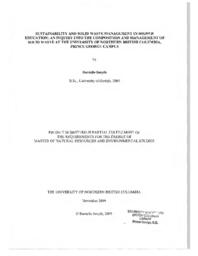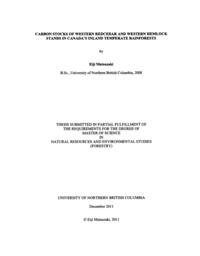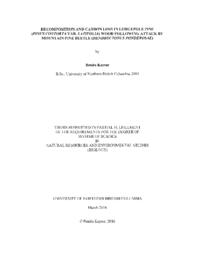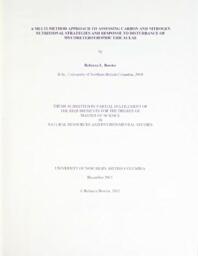Fredeen, Arthur
Person Preferred Name
Arthur Fredeen
Related Works
Content type
Digital Document
Description / Synopsis
I assessed some coastal temperature old-growth forests of southwestern British Columbia to understand their post-wildfire structure, carbon storage and biodiversity values. I used a remotely sensed relativized burn ratio and a composite burn index to compare measures of aboveground carbon, structural complexity and floristic diversity between burned and unburned reference plots years after four large wildfires. The unburned reference plots represented the natural range of variation of old growth values. In burned plots, 21 of 60 retained carbon values and 10 plots retained structural values similar to unburned old growth plots. There was an average of 12% floristic similarity between burned and unburned understory plant communities. For land managers, this method offers a way to compare old-growth values after wildfire in order to prioritize protection, salvage, and restoration options.
Origin Information
Content type
Digital Document
Description / Synopsis
Environmental sustainability is key to the long-term sustainability of a business during these times of climate change crises and global warming. Otherwise, survival will be challenging for large carbon emitters. This dissertation travels through carbon accounting to carbon reporting to corporate level environmental sustainability efforts and a firm’s value. It examines whether the corporation-level environmental sustainability efforts increase its value, focusing on Global 500 companies for 2010-2018. Measures used for corporate-level ecological sustainability include the choice of voluntary disclosure, carbon emission amounts, carbon intensity, and carbon disclosure quality. Different proxies used to measure a firm’s value comprise the market value of equity, return on assets, return on equity, Tobin’s Q, and enterprise value. During the study period, those corporations that chose to disclose their carbon-related data on the CDP’s public platform noticed that the market valued their environmental sustainability efforts by increasing their market value – showing the market value-relevant content of voluntary carbon disclosures. Carbon disclosure quality stands out among the proxies used to measure environmental sustainability efforts at a corporate level. Some interesting findings showed that measuring and disclosing Scope 3 emissions must have played a significant role in increasing a firm’s disclosure quality and so its market value. Similar to Assidi's research, this study provides guidelines for investors and managers to increase a firm’s value by using better quality carbon disclosures. This study also compared the firm’s value of disclosing and non-disclosing firms and, unfortunately, did not find any significant relationship between a company’s disclosure decision and market value in the context of global companies. These results are alarming given the current and potential hazards related to climate change and global warming. It seems that investors ignore climate-related urgency and focus on short-term profits. Companies do not find any incentives to reveal their environmental-related information on any public platform such as the CDP. This study examined and found that social pressure, market pressure, economic pressure, legal/institutional pressure, and previous year disclosure make the companies disclose their carbon information to the CDP. Based on the sample of the Global 500, the results support the notion that larger firms are aware of their social responsibility. So, they disclose environmental-related information voluntarily even in the absence of any mandatory requirement. Furthermore, high-levered firms are more likely to release their carbon-related information. However, the results report that a large proportion (25%) of the sample companies chose not to disclose carbon information. Also, this study showed that regulatory provisions had an observable influence on a company’s disclosing decision. These policies can force companies to reduce carbon emissions and make carbon disclosures their strategic priority. This study emphasized the impact of carbon disclosures, related information, their link to a firm’s value, and corporate-level environmental sustainability efforts. It also posits that corporation-level carbon disclosures can be a prerequisite to corporation-level ecological sustainability. In addition, these disclosures can serve as necessary and valuable environmental-related information for existing and potential investors and other interested stakeholders such as nongovernmental organizations (NGOs), governments, policymakers, accountants, sustainability experts, and researchers. On positive notes, around fifty-five percent of the corporations whom CDP approached for their environmental-related disclosures in 2010 reported to the CDP for the study period, to indicate that these firms are already in the war against climate change and working on business and environmental sustainability. Moreover, these efforts could pay off more in a mandatory environmental-related disclosure regime provided that these disclosures include all scope of emissions. Therefore, this study recommends that environmental-related disclosures be required as part of a company’s annual reports to be more informative for current and potential investors. Moreover, standards of environmental sustainability are needed from standard setters’ bodies to guide the companies to provide consistent and accurate information in their annual reports so that investors can make informed investment decisions.
Origin Information
Content type
Digital Document
Description / Synopsis
Glyphosate-based herbicides (GBH) are highly effective, nonselective herbicides that have been used in British Columbia’s forest industry since the early 1980s to remove deciduous vegetation competing with commercially important coniferous tree seedlings. Long term persistence of glyphosate and its metabolic byproduct aminomethylphosphonic acid (AMPA) in the forest ecosystem has not previously been monitored beyond one year, although it is known that glyphosate may be stored in tissues of plants that received a sublethal dose of GBH. The primary objective of this research thesis was to determine the duration (up to twelve years) of glyphosate and AMPA persistence in the roots, shoots, and fruits of selected perennial plant species in GBH-treated forest cutblocks. Due to the ability of glyphosate to form insoluble complexes with metal ions, it was suspected that metal nutrient concentrations in surviving plants might be affected by persistent glyphosate. The second main objective of this thesis was to determine if concentrations of calcium (Ca), iron (Fe), magnesium (Mg), manganese (Mn), nickel (Ni) and zinc (Zn) were significantly altered by GBH treatment. Plant tissue samples from five forest understory perennial species growing in two distinct biogeoclimatic (BEC) zones of northern BC were analyzed for glyphosate and AMPA content, and comparisons were made between species, plant tissue type, and BEC zone. Residues persisted for up to 12 years in some tissue types, and root tissues generally retained glyphosate residues longer than shoot tissue types. Samples from the drier, colder, more northern Boreal White and Black Spruce (BWBS) BEC zone retained significantly higher levels of glyphosate for longer than samples collected from the warmer Sub-Boreal Spruce (SBS) BEC zone. Shoot samples from three species in the SBS zone were further analyzed for nutrient contents. Nutrient concentrations were more variable over time in treated samples than in control samples, and comparison of treated and control samples resulted in significant differences in 47 % of all cases, and in 61 % of year one samples. Generally, Ca, Mg and Ni decreased with treatment in all three species; Zn increased with treatment for each species; and Fe and Mn had inconsistent changes with treatment. Both the persistence of glyphosate and related changes in plant nutrient concentrations may have cumulative health effects for wildlife. More research should be conducted in this field, as many questions remain unanswered.
Origin Information
Content type
Digital Document
Description / Synopsis
Systematic Conservation Planning (SCP) is the practice of comprehensively assessing a landscape for its conservation value via geospatial analysis. This research project applied SCP principles and tools to Tsay Keh Dene Nation Territory in north-central British Columbia, Canada. Working with the Tsay Keh Dene community, we articulated conservation goals and determined important features on the landscape that helped attain those goals. This effort also examined climate change and connectivity impacts on conservation, comparing which lands are most worth conserving today versus 30 and 60 years from now. Finally, this work explored the interweaving of Traditional Ecological Knowledge with the Western science-based SCP framework to ensure a more holistic and inclusive outcome. Our findings both validated ongoing conservation efforts in the Territory and identified additional high-value areas for future consideration. This research can also serve as a guide for other accessible TEK-focused or community-led SCP efforts.
Origin Information
Content type
Digital Document
Description / Synopsis
‘Just transition’ is a burgeoning policy goal, as well as an academic and social justice concept. Governments are increasingly operationalizing just transition policy approaches as they realize the scale and scope of industrial transition needed to meet climate targets, recognizing the impact this transition will have on workers and communities. However, there is little consensus on what is considered ‘just’ and ‘fair’. Through interviews with over 40 participants in the Cariboo Regional District (during the COVID-19 pandemic), this thesis will provide insights into the concept of a just transition according to forestry-dependent workers and communities. This research examines the Government of British Columbia’s ‘Supports for Interior Forestry Workers’ programs in response to the 2019 forest sector downturn and describes lessons about how impacted workers and community members evaluate transition management based on their perceptions and values. This work also offers principles and practices for delivering just transition policy and program supports. This research suggests that the Government of British Columbia must adjust existing supports and proactively develop policy measures to manage and mitigate the negative consequences of future transitions in collaboration with other key actors.
Origin Information
Content type
Digital Document
Description / Synopsis
I evaluated how intra- and inter-specific competition affects the development of eleven wood attributes of trembling aspen (Populus tremuloides Michx.) and white spruce (Picea glauca (Moench) Voss) over 34 years. My analysis was conducted in a mixedwood trial site in Northern British Columbia, Canada, that included treatments consisting of 0, 1000, 2000, 5000, and 10000 stems per hectare of aspen. Competition was found to negatively influence wood attribute development in aspen and positively impact spruce (at low levels of competition). Plot level competition indices were the best predictor of variation in aspen wood attributes, while stand level competition (population density) best explained the majority of spruce wood attributes. Maintaining aspen at lower densities in intimate mixture can have a positive effect on spruce wood quality, while incurring relatively small reductions in spruce volume production and also retaining the ecological benefits associated with managing for mixed stands.
Origin Information
Content type
Digital Document
Description / Synopsis
Demystifying the story of food – from seed to store to stomach and how that cycle perpetuates – is a core tenet of food literacy and the central aim of this project. While exposure to environmental issues is critical to developing awareness, young learners are often burdened with crisis-laden facts about the state of our world and our food systems. Approaching difficult subjects using a narrative approach is one way to mitigate this burden. In this project, children’s literature that centres on farms and food production/food gathering in settler and Indigenous contexts is used as a launching pad for discussions about food security. Food is an enduring theme in children’s and young adult literature, and is particularly prevalent in narratives from the past, where food gathering and production are often rooted in their environmental contexts. These food narratives provide a pathway for young readers to critically investigate contemporary environmental concerns from a safe space. This project investigates how children’s literature can be used as part of a critical food pedagogy to enhance the food literacy of young learners and encourage them to find common ground between the physical world and the worlds they read. In locating, analyzing, and experiencing food environments in literature via an affective, indirect approach, food literacy - which is foundational to the development of environmentally responsible behaviour – is enhanced.
Origin Information
Content type
Digital Document
Description / Synopsis
In complex industrialized societies, it is virtually impossible for individuals to know the environmental impact of their consumption. A personal cap and trade system, which assigns citizens limited, tradable allocations of pollution (e.g., carbon pollution), can link individuals directly to their environmental impact and enable them to chart a path to sustainable living. To explore public reactions to this system, an Amazon Mechanical Turk sample of individuals residing in Canada viewed a video describing either a carbon tax system or a personal cap and trade system. A personal cap and trade system based on allocations of kilograms of carbon dioxide equivalents (kgCO2e) was viewed as significantly more likely than carbon taxes to enable Canadians to reduce their carbon consumption and to live more sustainably. A range of public concerns that might limit support for carbon pricing systems were identified with qualitative analysis of participant comments about the systems.
Origin Information
Content type
Digital Document
Description / Synopsis
Carbon (C) storage in residual live lodgepole pine trees in northern BC at Kennedy Siding was measured 11 and 12 years after a severe mountain pine beetle (MPB) epidemic. Kennedy Siding eddy covariance (EC) measurements showed that the net ecosystem productivity (NEP) was quick to recover C sink status. In this study, measurements of heights and diameters of 160 residual live lodgepole pine trees and a subset of 60 tree cores were used to calculate residual tree stem C-storage in 2017 and 2018 (36.01 and 26.71 g C m-2 yr-1 respectively). Dendrochronology analyses indicated that residual pine trees released on average 392% in the decade following versus the decade prior to MPB-attack. Stem C-storage was strongly and positively correlated with ECNEP measurements (R2=0.77) and percent downed canopy trees (R2=0.837), suggesting that growth release of residual trees was likely driven by improvements in resources (e.g. light, moisture, nutrient).
Origin Information
Content type
Digital Document
Origin Information
Content type
Digital Document
Origin Information
Content type
Digital Document
Origin Information
Content type
Digital Document
Origin Information
Content type
Digital Document
Origin Information
Content type
Digital Document
Origin Information
Content type
Digital Document
Origin Information
Content type
Digital Document
Origin Information
Content type
Digital Document
Origin Information
Content type
Digital Document
Origin Information
Content type
Digital Document
Origin Information
Content type
Digital Document
Origin Information
Content type
Digital Document
Origin Information
Content type
Digital Document
Origin Information
Content type
Digital Document
Origin Information
Content type
Digital Document
Origin Information

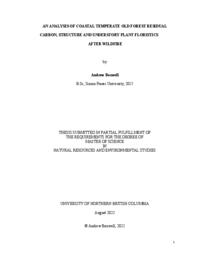



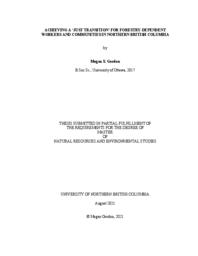

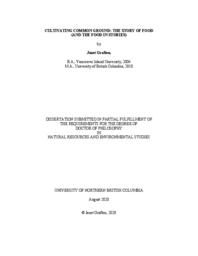


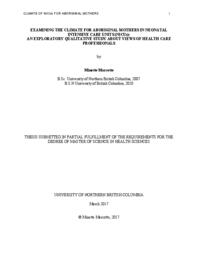

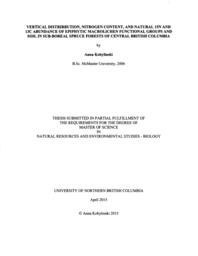
![The influence of warming, site characterestics [sic], and host plant on root-associated fungal communities from Alexandra Fiord in the Canadian high arctic The influence of warming, site characterestics [sic], and host plant on root-associated fungal communities from Alexandra Fiord in the Canadian high arctic](/_flysystem/repo-service/styles/solr_grid_thumbnail/repo-service/2025-03/11558-Thumbnail%20Image.png.jpeg?itok=X0Q_2pPY)
